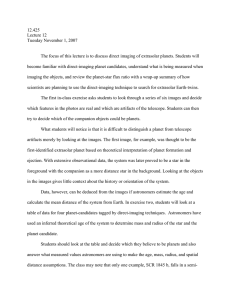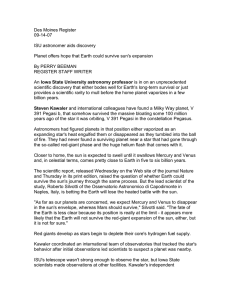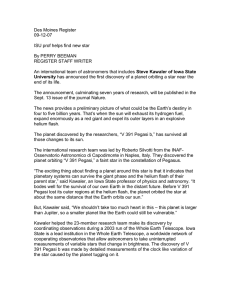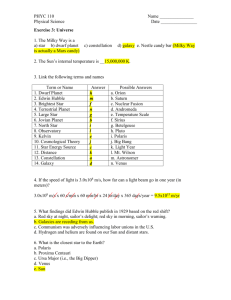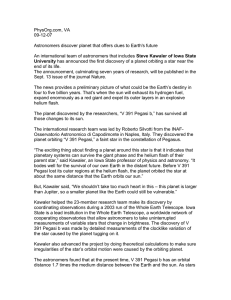CBC, Saskatchewan, Canada 09-13-07 Planet survives expansion of star to red-giant size
advertisement
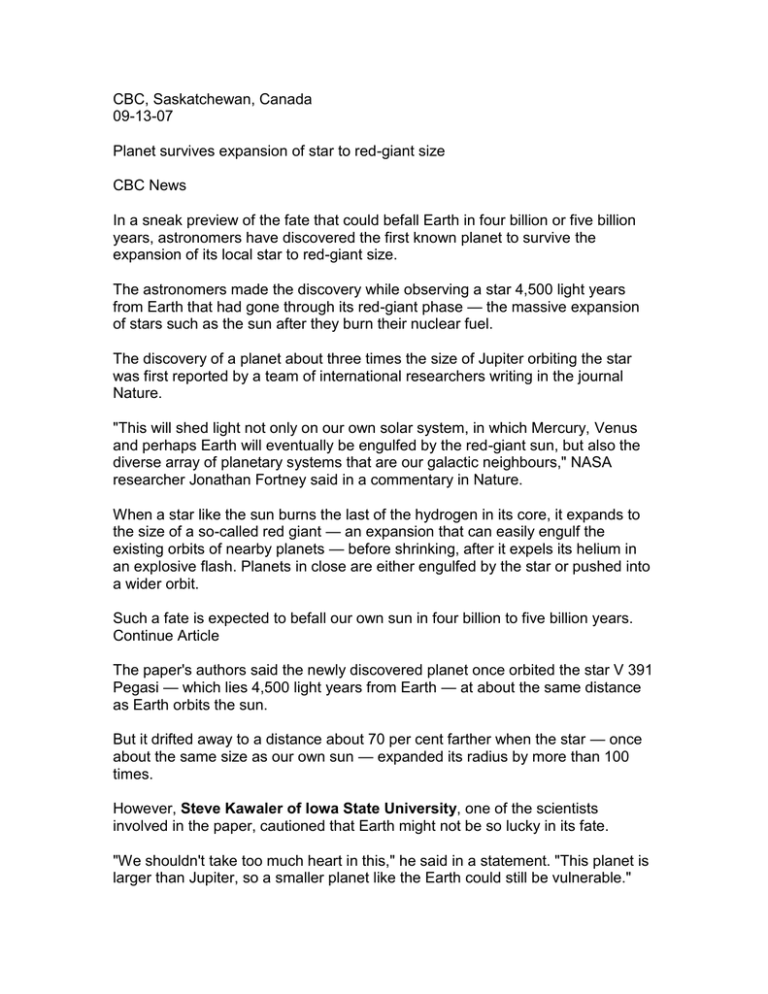
CBC, Saskatchewan, Canada 09-13-07 Planet survives expansion of star to red-giant size CBC News In a sneak preview of the fate that could befall Earth in four billion or five billion years, astronomers have discovered the first known planet to survive the expansion of its local star to red-giant size. The astronomers made the discovery while observing a star 4,500 light years from Earth that had gone through its red-giant phase — the massive expansion of stars such as the sun after they burn their nuclear fuel. The discovery of a planet about three times the size of Jupiter orbiting the star was first reported by a team of international researchers writing in the journal Nature. "This will shed light not only on our own solar system, in which Mercury, Venus and perhaps Earth will eventually be engulfed by the red-giant sun, but also the diverse array of planetary systems that are our galactic neighbours," NASA researcher Jonathan Fortney said in a commentary in Nature. When a star like the sun burns the last of the hydrogen in its core, it expands to the size of a so-called red giant — an expansion that can easily engulf the existing orbits of nearby planets — before shrinking, after it expels its helium in an explosive flash. Planets in close are either engulfed by the star or pushed into a wider orbit. Such a fate is expected to befall our own sun in four billion to five billion years. Continue Article The paper's authors said the newly discovered planet once orbited the star V 391 Pegasi — which lies 4,500 light years from Earth — at about the same distance as Earth orbits the sun. But it drifted away to a distance about 70 per cent farther when the star — once about the same size as our own sun — expanded its radius by more than 100 times. However, Steve Kawaler of Iowa State University, one of the scientists involved in the paper, cautioned that Earth might not be so lucky in its fate. "We shouldn't take too much heart in this," he said in a statement. "This planet is larger than Jupiter, so a smaller planet like the Earth could still be vulnerable." As is the case with most planets discovered outside our solar system, the planet orbiting V 391 Pegasi was not seen directly but rather inferred from indirect measurements. It took seven years of observation to infer the existence of the planet.


